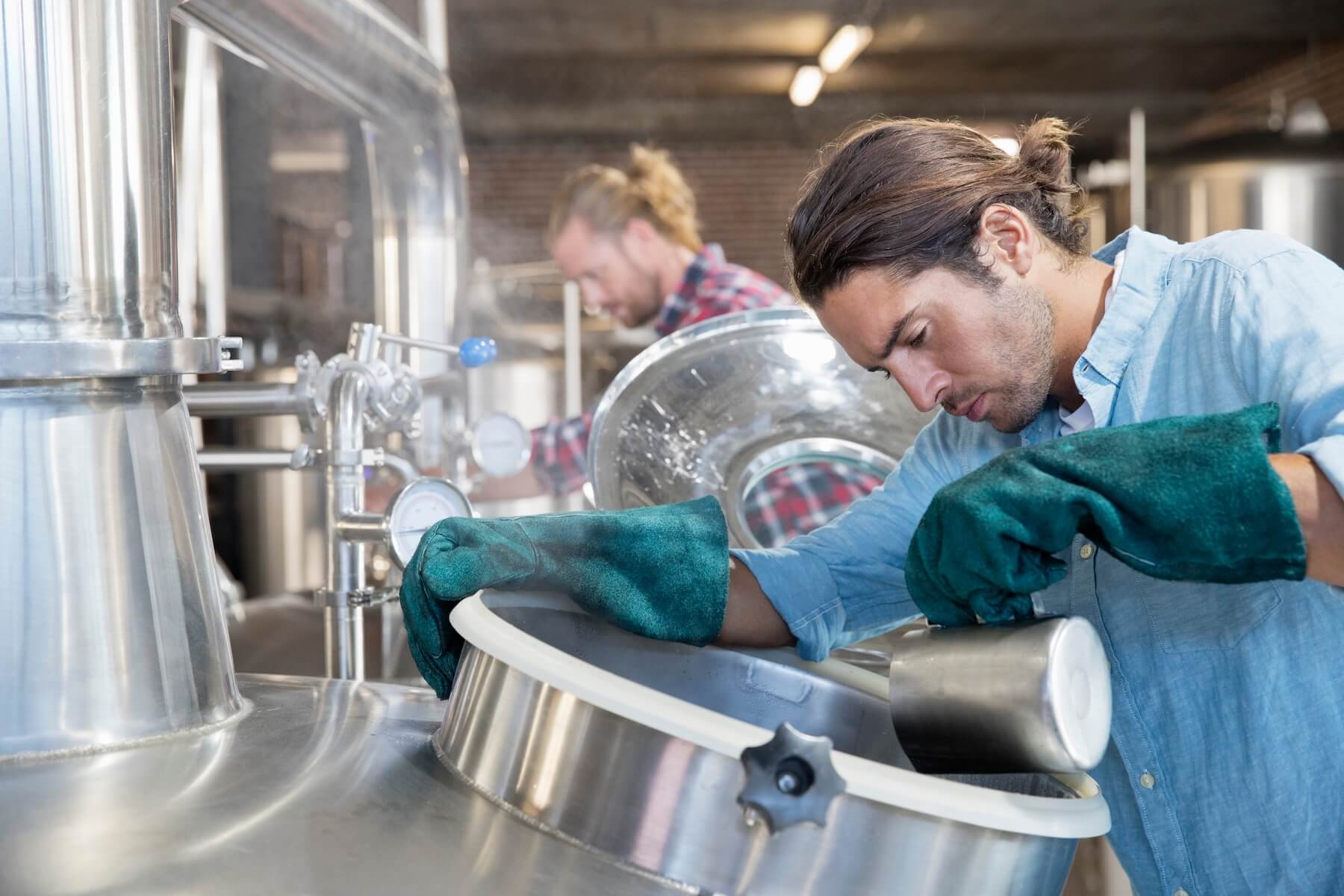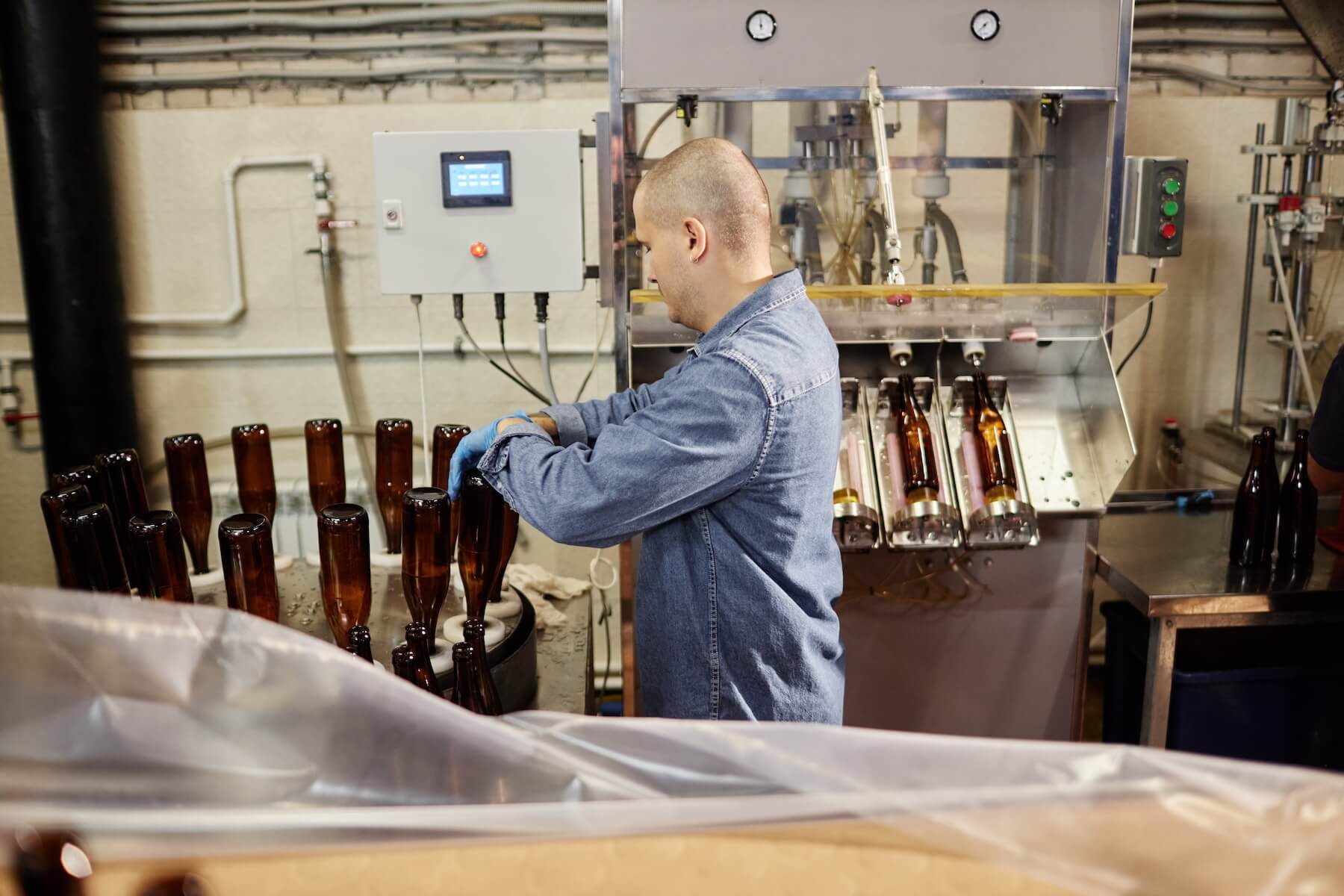The 2025 Craft Spirits Data Project, released this week by the American Craft Spirits Association (ACSA) and Park Street, paints a sobering picture of an industry facing its most significant challenges of the last decade. After years of explosive growth that saw craft distilleries multiply across the U.S., the craft spirits sector is now experiencing a sharp contraction that demands strategic responses from producers at every scale.
The data reveals five critical pressure points that are reshaping the craft spirits landscape. But for every challenge, there’s an opportunity to strengthen core business processes. Distilleries are discovering that industry-specific ERP systems provide the tools needed to navigate these turbulent waters, fuel growth and increase profitability.
What Defines a Craft Distillery?
Before jumping into the report, let’s outline what defines a craft distillery. According to the ACSA, a craft distillery is a U.S.-based licensed spirits producer (DSP) that makes less than 750,000 proof gallons annually. It markets itself as craft and maintains independent ownership, meaning no more than 50% of the company is owned by a large spirits producer (750,000+ annual gallons).
ACSA further designates three size categories: small (producing 1-10,000 gallons annually), medium (10,001-100,000 gallons), and large (100,001-750,000 gallons). This tiered framework recognizes both production scale and business integrity, distinguishing independent craft producers from large corporate operations. For the purpose of this blog, we’ll adopt ACSA’s definition of craft.
Challenge 1: The Vanishing Distillery
Perhaps the most shocking statistic from the report is the decline in active craft distilleries. August 2025 reported 25.6% fewer distilleries than the August 2024 count, a drop of 787 in a year. This represents a complete reversal from the prior year’s 11.5% growth rate and marks the steepest decline in the industry’s modern history.
While improved research methodology accounts for some of this decline, the report acknowledges that many distilleries simply closed their doors. The top five states — California, New York, Pennsylvania, Texas and Washington — all saw declines, with California losing a whopping 45% of its distilleries.
The numbers alone can be alarming. While there are many reasons these numbers change — reclassification, closing due to owner retirement, acquisition, bankruptcy — there are also efficiencies and technology distilleries can adopt to prevent closure.
From Survive to Thrive
Survival in a contracting market demands operational efficiency that most distilleries achieve only through specialized technology. Distillery ERP transforms how craft spirits producers manage their most expensive resource: time.
Comprehensive platforms, like Crafted ERP, eliminate the spreadsheet chaos that consumes hours of valuable production time. Instead of manually tracking inventory across multiple locations, reconciling batch records with TTB reports, or calculating COGS on legal pads, craft spirits producers gain real-time visibility into every aspect of their operation.
Consider a distillery spending 15 hours per month on inventory reconciliation, compliance reporting and batch costing. An ERP system can reduce this to 2-3 hours while providing more accurate, actionable data. That recovered time translates directly to reduced labor costs or redeployed effort toward revenue-generating activities. In a market where margins determine who survives, efficiency translates into competitive advantage.
Challenge 2: Accelerating Volume Decline & the Profitability Squeeze
This year’s report documents the industry’s second consecutive year of volume decline, with sales dropping 6.1% to 12.7 million cases — down from 13.5 million in 2023. More concerning, the rate of decline nearly doubled from the prior year’s drop.
The value decline tells an equally troubling story. Sales fell 3.3% to $7.6 billion, accelerating from 2023’s 1.1% decline. This gap between volume decline (-6.1%) and value decline (-3.3%) suggests producers are raising prices to protect revenue, but not enough to offset lost volume — a risky position that squeezes profitability from both sides.
Power Profitability With ERP
When volume drops, profitability hinges on knowing your true costs. Most craft distilleries operate with only an approximate understanding of production costs, relying on annual fiancial reviews or rough spreadsheet estimates that fail to capture the complexity of spirits production.
Distillery-specific ERP platforms provide batch-level costing that accounts for every variable in spirits production. You can capture grain costs that fluctuate with commodity markets, barrel inventory that appreciates during aging, angel’s share losses that vary by warehouse location and climate, and the intricate calculations required for blending multiple batches with different cost bases.
This granular cost visibility enables strategic decisions that protect margins, identifying which SKUs actually generate profit versus which destroy value. It also helps determine optimal blending strategies to balance quality with cost, and it recognizes when co-packing or contract production makes more financial sense than in-house production.
In a declining market, distilleries can’t afford to subsidize unprofitable products with profits from successful ones. ERP systems shine the light on these hidden dynamics and help you uncover cost-efficetive strategies to increase profits.
Challenge 3: The Market Share Erosion
Craft spirits’ volume market share declined from 4.6% to 4.5% in 2024, continuing a slow erosion from the 4.9% peak in 2021-2022. While value share has remained virtually unchanged, this masks a troubling reality: craft producers are maintaining dollar sales only through premium pricing while losing shelf space and consumer attention to larger competitors.
The concentration dynamic revealed in the report underscores this challenge: less than 2% of craft producers — the 39 large producers — account for 54.9% of all craft spirits volume. In comparison, 90% of producers — the 2,551 small distilleries — generate just 10.6% of volume.
Scalable Systems to Augment Growth
Competing against large producers requires operational sophistication that levels the playing field. Enterprise-grade ERP systems provide craft distilleries with the same supply chain visibility, demand planning capabilities, and inventory optimization that major spirits companies employ.
Crafted ERP enables distilleries to track sales velocity by distributor, account and market — insights that inform where to deploy limited sales resources for maximum impact. Inventory management modules prevent the cash flow disasters that occur when distilleries overproduce slow-moving SKUs while running out of bestsellers.
For distilleries trying to scale, ERP systems provide the infrastructure required to manage complexity: multiple warehouse locations, distributor pricing agreements, cross-category diversification, promotional spend tracking, and detailed record-keeping. The unified system allows all business information to live in the same database, enabling strategic decision-making about market expansion.
The distilleries that survive and grow in a consolidating market will be those that operate with the efficiency and insight of their much larger competitors. ERP systems provide that capability without requiring massive headcount or physical infrastructure expansion.
Challenge 4: The Employment Decline
After recovering from pandemic lows, craft spirits employment declined for the first time in the post-COVID era. Data shows a drop from 29,373 full-time employees in 2023 to 28,628 in 2024. The average distillery now employs 10.2 full-time staff, down from 10.3 the prior year.
While slight, this decline reflects the harsh mathematics of a contracting industry. Distilleries are eliminating positions, consolidating roles and asking remaining staff to do more with less. The challenge becomes maintaining operational quality and compliance with a leaner workforce.
ERP as an FTE
When headcount shrinks, technology must absorb the workload. A distillery-specific ERP system effectively multiplies your team’s capacity by automating the repetitive, time-consuming tasks. Inventory tracking becomes automatic rather than requiring monthly counting marathons. Order processing flows from distributor purchase order through fulfillment without manual re-entry across multiple systems.
Consider TTB compliance reporting, an obligation that can consume days of staff time every month. Crafted automates the generation of reports, drawing directly from production records, eliminating manual data entry and errors that could trigger an audit.
Built in Oracle NetSuite, Crafted will soon unlock AI capabilities to transform how lean teams operate. Imagine asking conversational questions like “What was our bourbon production cost in Q3?” and receiving instant answers without running reports or consulting spreadsheets. Behind the scenes, AI-powered forecasting anticipates inventory needs, flags potential compliance issues before they escalate, and identifies production anomalies that might signal quality concerns. Essentially, it providews the analytical horsepower of a dedicated data analyst without the extra headcount.
The math is straightforward: if an ERP system saves 20 hours per week of administrative work, you’ve gained half an FTE’s worth of productivity. Add AI capabilities, and your remaining team becomes dramatically more effective at strategic decision-making. Quality and customer service don’t suffer when you’re working smarter, not just harder.
Challenge 5: The Investment Pullback
Total industry investment declined for the first time in the data series, dropping from $885 million in 2023 to $811 million in 2024 (-8.4%). Average investment per distillery fell from $310,000 to $289,000, continuing a slide from the $337,000 peak in 2021.
This investment retreat signals that distilleries are hoarding cash, deferring expansion plans, and taking a wait-and-see approach to capital expenditures. While prudent given market conditions, this caution also means distilleries are avoiding the improvements that could enhance efficiency and competitiveness.
Technology as a Strategic Differentiator
Forward-thinking distilleries have a strategic opportunity here. While competitors pull back on all investments, smart producers recognize that technology investments offer fundamentally different risk-reward profiles than physical expansion.
A new production facility requires hundreds of thousands in capital expenditure, with payback periods measured in years and significant ongoing costs. An ERP system, by contrast, delivers ROI within months through labor savings, inventory optimization and reduced compliance risk.
Cloud-based ERP platforms eliminate the traditional barriers to enterprise software — no server infrastructure to purchase and maintain, no IT staff required, and subscription pricing that converts large capital expenditures into manageable ones. For distilleries preserving cash, this financial structure makes technology accessible even while belt-tightening.
The counterintuitive truth is that economic downturns are often the optimal time for technology investment. Implementers have more bandwidth when growth isn’t consuming all attention. Systems can be properly configured when there’s time to get it right, and the efficiency gains provide immediate relief to compressed margins.
The distilleries that will emerge strongest from this contraction are likely those that invested in operational infrastructure, while competitors simply cut costs and waited for better times.
Where Will You Go From Here?
The 2025 Craft Spirits Data Project documents an industry at an inflection point. The growth phase has ended, and a new era of operational excellence will separate thriving distilleries from those that become statistics in next year’s report.
Distillery-specific ERP systems like Crafted don’t solve every challenge facing craft distilleries — they can’t create consumer demand or eliminate distributor consolidation. But they can address the controllable variables: operational efficiency, cost visibility, compliance accuracy, resource optimization and data-driven decision-making.
In a market where 25% of producers disappeared in a single year, the distilleries that survive will be those that operate with the efficiency previously only achieved by much larger competitors. ERP systems provide that capability — transforming craft distilleries from businesses run on spreadsheets and institutional knowledge into sophisticated operations with enterprise-grade infrastructure.
The headwinds are real and significant, but the tools to navigate them are available — and proven. The question facing every craft distillery owner is whether you’ll invest in the operational foundation required to weather this storm or hope market conditions improve before its too late.
The data suggests that hope is not a strategy. Building operational resilience through technology can be though.
What’s your next move? Contact us when you’re ready to take the next step toward digital transformation.







